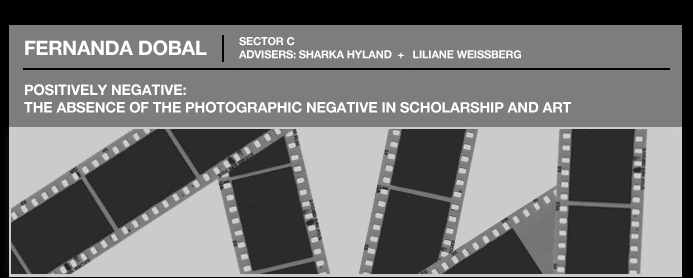
POSITIVELY NEGATIVE: THE PHOTOGRAPHIC NEGATIVE IN SCHOLARSHIP AND ART
The photographic negative is essential to the history of photography and the creation of photographs. An unlimited number of prints can be made from a single negative, while the negative itself remains unique and irreplaceable. Yet despite the originality of the negative in capturing the image, there is relatively little academic and artistic interest in them. Perhaps this is due to the hardship in legibility that the negative meets the eye with – Henry Fox Talbot called the negative “hardly intelligible” at its inception.
Yet the negative is more than a mere photographic tool, for it is a unique and generative piece. As it is, the negative exists in the realm between the moment the photograph is taken with a closing shutter and the printing process it generates in the darkroom. But what are the issues of authenticity that rise when negatives are re-appropriated? What is the role of the negative in the art market and, more personally, to the artist himself?
In an age when the life cycle of the negative seems to be once more declining, it is important to question its new role. What does it mean for the negative to no longer be a mass medium available to the wide public? The digital has substituted it in this regard. Perhaps, by becoming once again an exclusive medium it has regained the authenticity and sacredness that permits it to have aura.
The installation piece developed as a result between my interactions with the negative as an art object. It is composed of four tall pedestals, which work as lightboxes to present the negative, encased in resin, as a tangible object. Moreover, the negative becomes intelligible for they are 8x10” negatives of other negatives – creating a positive image that is held out by negative hands.
SECTOR C: Art Practice and Technology
ADVISORS: Sharka Hyland (FNAR) | Liliane Weissberg (GRMN/COML)

 Visual Studies
Visual Studies